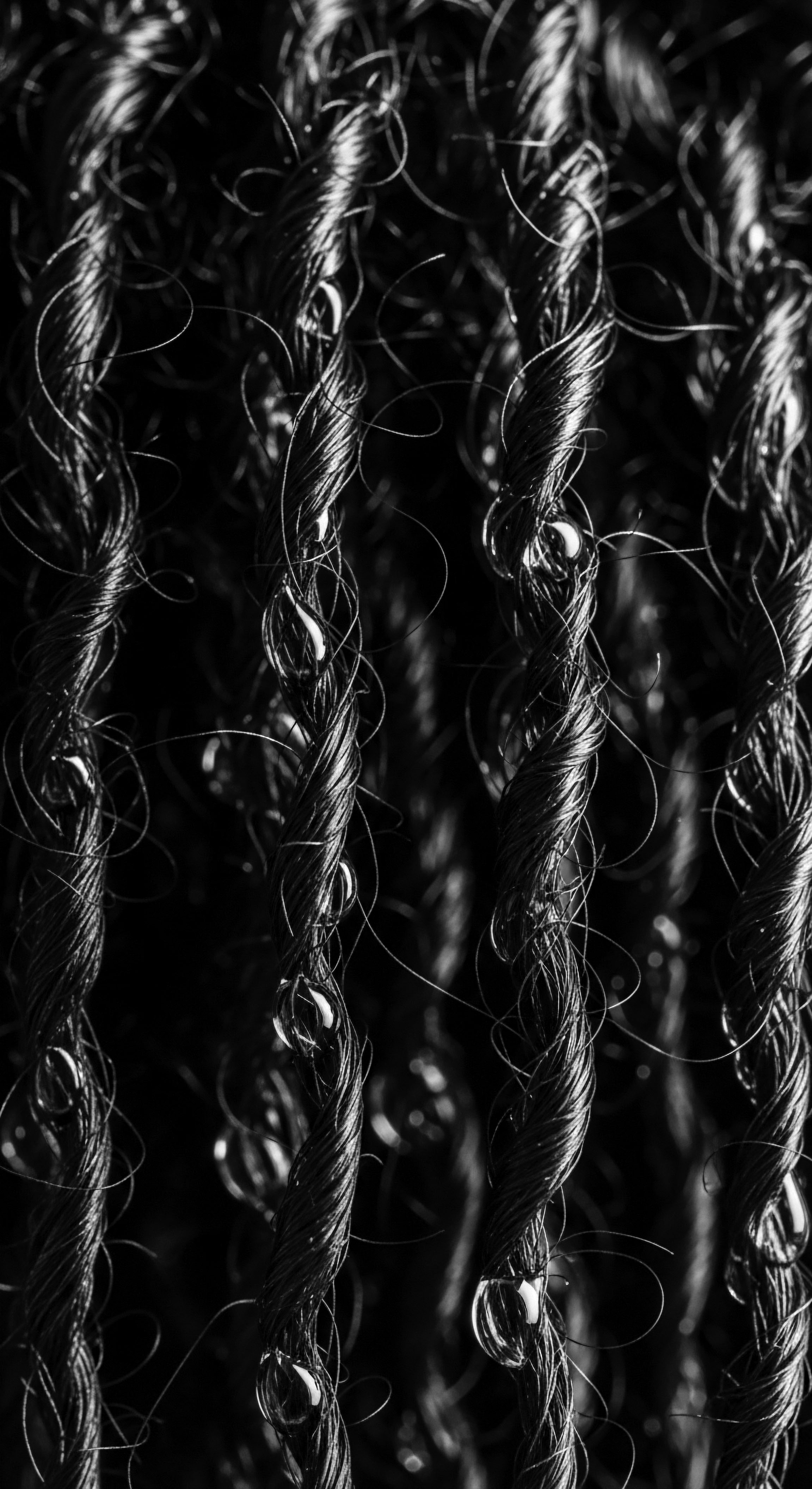
Fundamentals
The essence of ‘Cultural Hair Narratives’ resides in the deeply personal and collectively shared stories that hair, particularly textured hair, holds across generations and communities. This concept offers an explanation of how hair serves as a profound archive, a living testament to heritage, identity, and resilience. It is a statement that recognizes hair not merely as a biological outgrowth, but as a vibrant repository of meaning, tradition, and communal memory. From the earliest whispers of humanity, hair has held significance, often reflecting social standing, spiritual beliefs, or tribal affiliation.
For those whose ancestry traces back to the diverse lands of Africa, the hair upon one’s head is far more than a physical attribute; it is a profound connection to the earth, to ancestors, and to the very fabric of existence. The delineation of Cultural Hair Narratives, in its simplest form, acknowledges that each coil, kink, and wave carries an inherited legacy. This heritage is not static; rather, it is a dynamic interplay of ancestral practices, historical events, and contemporary expressions.
Cultural Hair Narratives are the living stories woven into the very structure of textured hair, carrying the ancestral wisdom and communal spirit of generations.
The biological structure of textured hair, with its unique follicular morphology, inherently predisposes it to a rich array of styles and care rituals. This elemental biology, these ‘Echoes from the Source,’ provided the initial canvas for human expression. Ancient communities understood the specific needs of their hair, developing sophisticated methods of cleansing, conditioning, and styling using botanicals and natural resources readily available in their environments. These were not arbitrary acts; they were practices imbued with intention, often passed down through oral tradition, shaping the earliest forms of hair narratives.
Consider the profound simplicity of early hair adornments, such as shells, beads, or carved wood, each piece often carrying symbolic weight or signifying status within a collective. These elements became part of the visual language of hair, communicating a wearer’s age, marital status, or even their spiritual path. The understanding of Cultural Hair Narratives begins with this recognition ❉ that every choice concerning hair, from its daily upkeep to its ceremonial presentation, is an utterance in a larger, ongoing dialogue with history and identity.
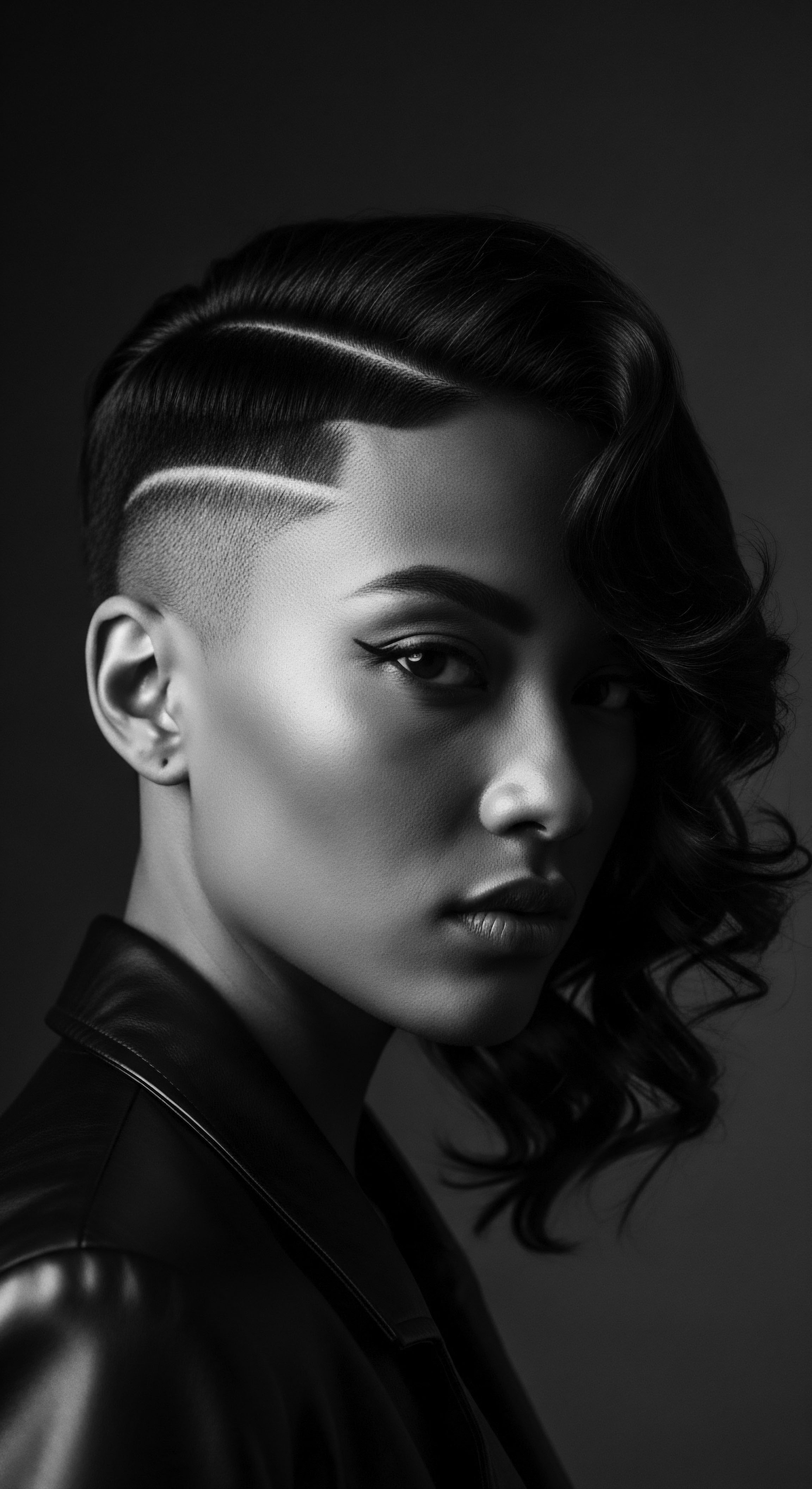
The Rooted Language of Early Care
Long before modern science could describe the precise protein structures of hair, ancient civilizations possessed an intuitive grasp of its vitality. They understood that healthy hair was a sign of well-being, a reflection of inner balance and connection to the natural world. This ancestral wisdom formed the bedrock of early hair care systems, where plants like aloe, shea, and various oils were revered for their restorative properties. The application of these ingredients was often a communal affair, strengthening bonds and transmitting knowledge from elder to youth.
- Baobab Oil ❉ Sourced from the ‘tree of life,’ baobab oil was cherished across parts of Africa for its emollient properties, used to soften and protect hair from harsh environmental elements, reflecting an early understanding of hair’s need for deep moisture.
- Kalahari Melon Seed Oil ❉ From the arid regions, this oil provided lightweight moisture and nourishment, a testament to the ingenuity of finding beneficial resources even in challenging landscapes.
- Red Clay and Herbs ❉ Used for cleansing and conditioning, these natural elements were often mixed with water to create pastes that purified the scalp and hair, demonstrating an early form of natural detox and fortification.
These traditional preparations and their ceremonial applications are the foundational paragraphs in the vast book of Cultural Hair Narratives, demonstrating that hair care was never a mere aesthetic pursuit. It was, and remains, an act of preservation—of self, of community, and of heritage.
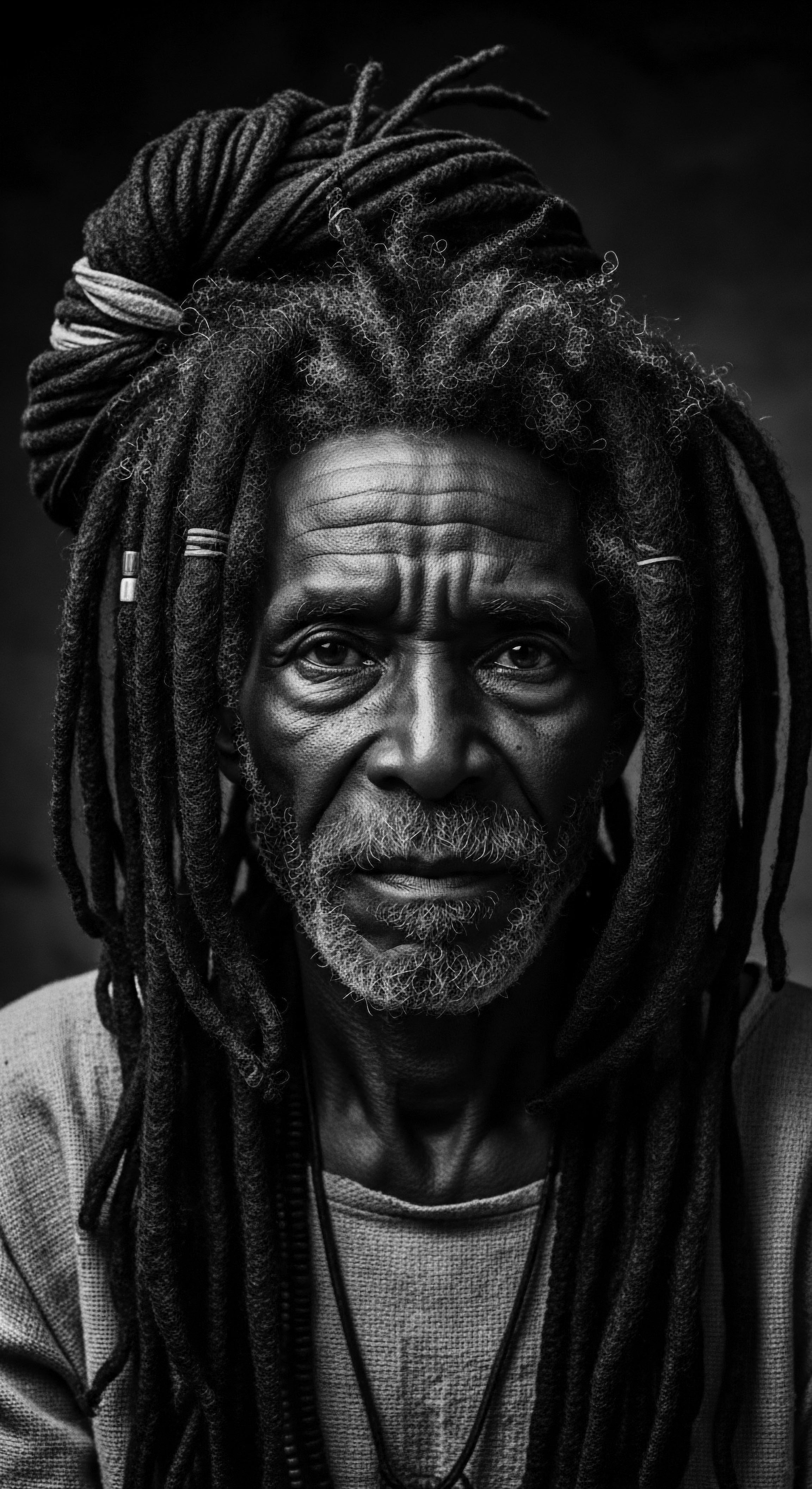
Intermediate
Moving beyond foundational principles, the intermediate meaning of ‘Cultural Hair Narratives’ deepens into the intricate ways these stories are passed through living traditions, forming what we might call ‘The Tender Thread’ of communal existence. This interpretation clarifies how hair acts as a dynamic medium for expressing collective identity, cultural values, and historical memory, especially within Black and mixed-race communities. It is a designation that acknowledges the continuous evolution of hair practices as they respond to societal shifts, migration, and the persistent desire for self-expression.
The significance of hair rituals extends far beyond personal grooming; they become profound acts of communal bonding and cultural affirmation. Consider the hours spent in shared spaces—porches, living rooms, salons—where hands meticulously work through coils and curls. These are not simply moments of styling; they are hallowed times for intergenerational exchange, for sharing wisdom, for storytelling. Here, the tender touch of a mother braiding her child’s hair or a friend meticulously twisting a style becomes a tangible link to ancestral practices, a silent yet potent reaffirmation of lineage.
Hair rituals in Black and mixed-race communities are profound communal acts, transmitting heritage and strengthening bonds across generations.
The collective experience of textured hair, often navigating external pressures and imposed beauty standards, has forged narratives of resilience and reclamation. Hair becomes a visual language of defiance, a rejection of narratives that sought to diminish or erase its inherent beauty. The choice to wear one’s hair in its natural state, adorned with traditional styles, or styled in contemporary expressions that honor ancestral forms, becomes a powerful declaration of self-acceptance and cultural pride. This is the continuous elucidation of Cultural Hair Narratives in action, constantly being rewritten and reinterpreted by each generation.
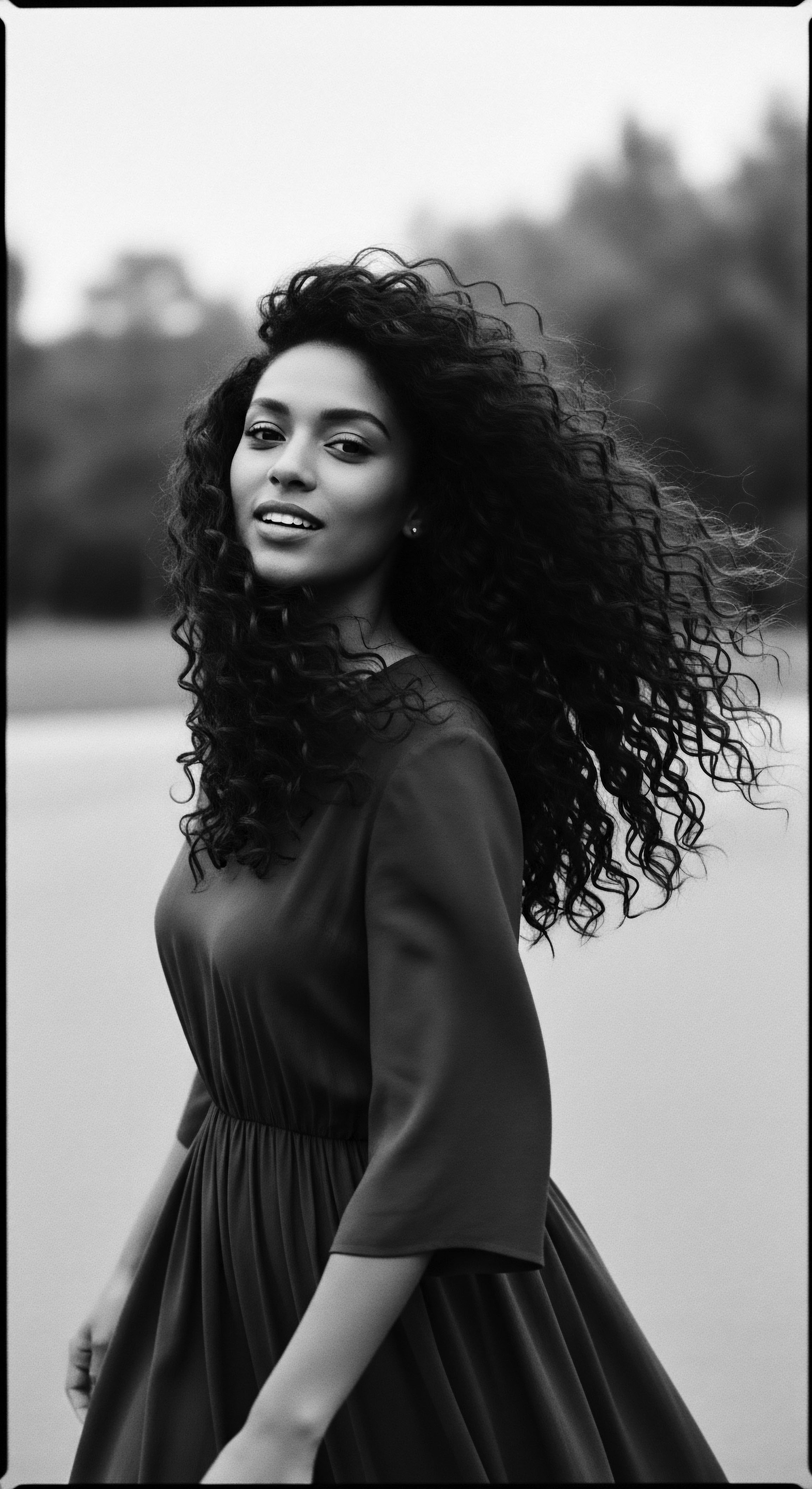
The Living Archive of Braids and Twists
Across the African diaspora, styles such as cornrows, braids, and twists are more than aesthetic choices; they are historical documents etched onto the scalp. These styles carry specific meanings, often signifying marital status, age, or tribal affiliation in traditional contexts. During periods of immense struggle, such as the transatlantic slave trade, these styles took on clandestine meanings, becoming crucial tools for survival and resistance. The intricacy of a particular pattern, the direction of a braid, or the items secreted within the strands could convey messages, map escape routes, or preserve seeds for future cultivation.
| Historical Context Pre-colonial African societies utilized hair as a marker of social standing, spiritual belief, and tribal identity. |
| Cultural Hair Narrative Link Hair served as a visual language, communicating complex social structures and individual roles within the community. |
| Historical Context During the transatlantic slave trade, hair practices became covert methods of resistance and cultural preservation. |
| Cultural Hair Narrative Link Braids and twists hid seeds, rice, or even escape routes, embodying resilience and a refusal to abandon ancestral ways. |
| Historical Context The Civil Rights Movement saw the rise of the Afro as a symbol of Black pride and political defiance. |
| Cultural Hair Narrative Link Hair became a bold statement of identity, challenging dominant beauty standards and asserting cultural autonomy. |
| Historical Context Contemporary natural hair movement, reclaiming diverse textured hair types. |
| Cultural Hair Narrative Link Hair signifies self-acceptance, connection to heritage, and a celebration of the innate beauty of Black and mixed-race hair. |
| Historical Context The journey of textured hair reveals an unbroken lineage of cultural expression and enduring strength. |
The act of braiding, for instance, is a tangible link to a collective past. The rhythmic pulling and twisting of hair, often accompanied by conversation and song, creates a shared space where stories are exchanged, traditions are reinforced, and the deep connection to ancestral wisdom is felt. This physical and emotional connection forms the very substance of Cultural Hair Narratives, making them a living, breathing aspect of cultural heritage.

The Healing Power of Shared Hair Spaces
Beyond the visual aspects, hair care spaces have historically served as sanctuaries, places of solace and healing. In many communities, the salon or the home hair-braiding session functions as a therapeutic environment where vulnerabilities can be shared, burdens lightened, and collective strength reaffirmed. The gentle touch, the shared laughter, the quiet understanding—these elements contribute to a holistic sense of well-being that extends beyond the physical appearance of hair.
This communal aspect of hair care is a testament to the enduring significance of Cultural Hair Narratives. It underscores that hair is not an isolated entity but is deeply interwoven with mental, emotional, and spiritual health. Honoring these traditions, therefore, becomes an act of self-care rooted in ancestral wisdom, recognizing the profound interconnection between hair, heritage, and holistic wellness.
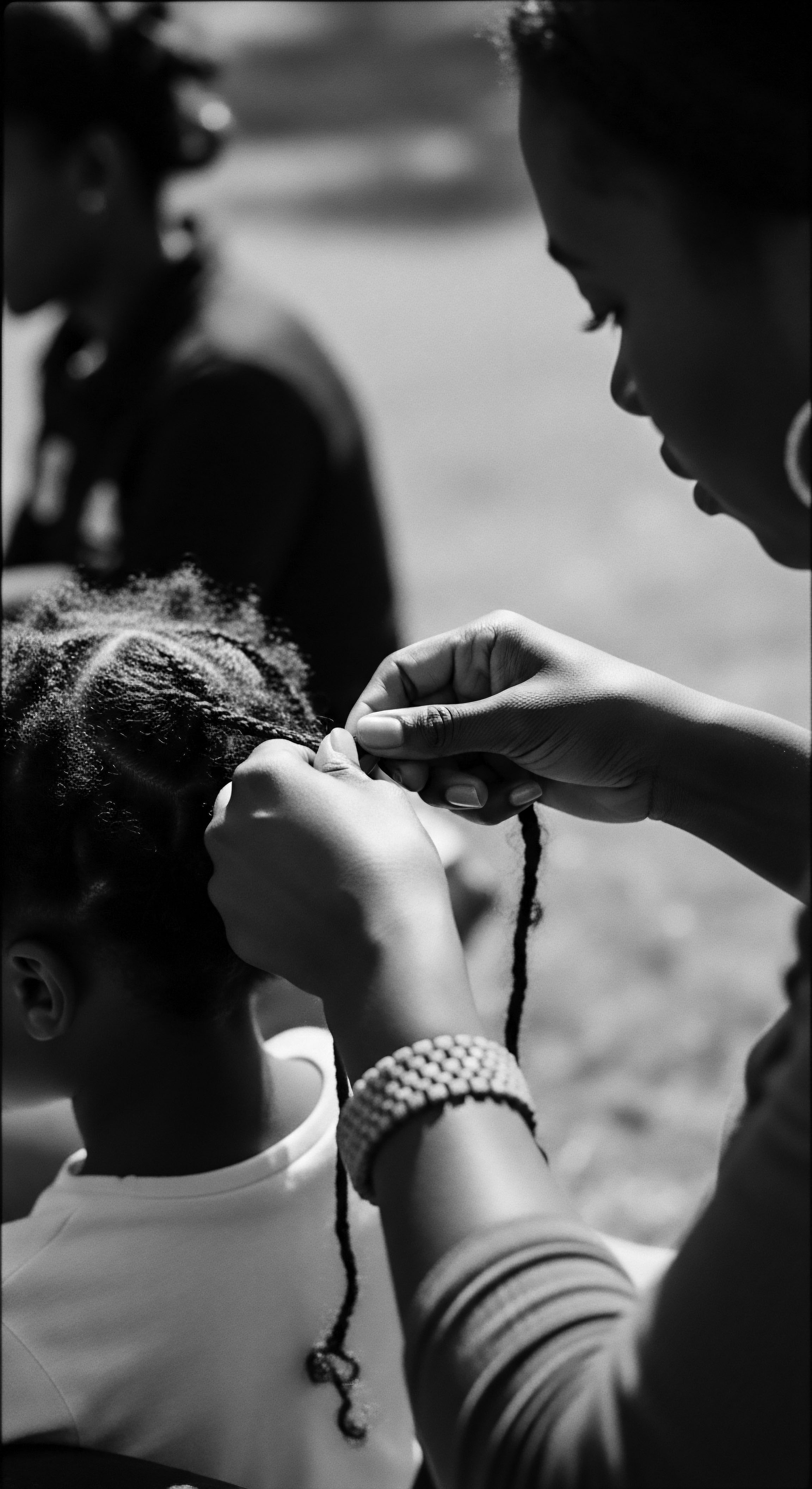
Academic
At an academic level, ‘Cultural Hair Narratives’ is understood as a complex, multi-layered socio-cultural construct that delineates the profound semantic and semiotic systems embedded within hair practices, particularly concerning textured hair. This scholarly interpretation clarifies how hair functions as a primary site for the inscription, transmission, and negotiation of identity, power, resistance, and belonging across diverse historical and diasporic contexts. It is an elucidation that transcends superficial aesthetic considerations, delving into the epistemological and ontological dimensions of hair as a corporeal archive and a performative medium.
The meaning of Cultural Hair Narratives, from an academic perspective, rests upon its capacity to reveal the intricate interplay between individual agency and collective memory, often within oppressive societal structures. Hair, in this framework, becomes a powerful tool for counter-hegemonic expression, a site where marginalized communities assert their humanity, maintain cultural continuity, and challenge dominant beauty paradigms. This intellectual endeavor necessitates a rigorous examination of historical ethnography, anthropological studies of material culture, and critical race theory to fully comprehend the profound implications of hair choices as acts of self-determination and cultural preservation.
Cultural Hair Narratives are scholarly frameworks for understanding hair as a complex semiotic system, reflecting power dynamics, identity assertions, and enduring cultural legacies.
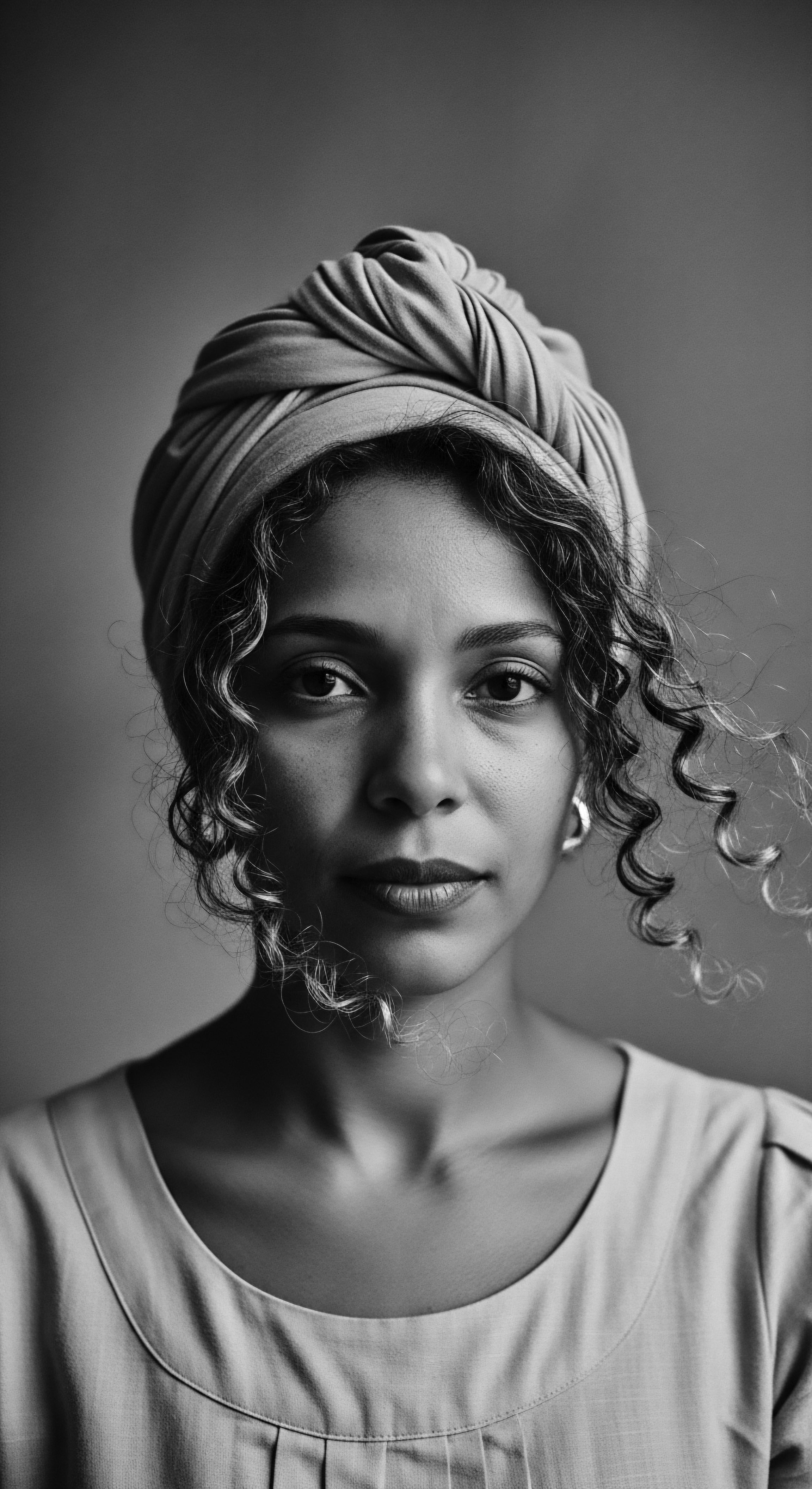
The Unbound Helix ❉ Hair as a Cartographic and Archival Medium
The concept of the ‘Unbound Helix’ refers to the boundless capacity of textured hair to hold and convey complex information, transcending its biological function to become a dynamic cultural artifact. One compelling historical example that powerfully illuminates this connection to textured hair heritage and ancestral practices is the documented use of intricate braiding patterns among enslaved African populations in the Americas, particularly within Maroon communities. These communities, often formed by self-liberated individuals, developed sophisticated methods of communication and survival that frequently involved hair.
For instance, historical accounts and oral traditions from communities like San Basilio de Palenque in Colombia, founded by Benkos Biohó in the 17th century, describe how enslaved women ingeniously utilized their braided hairstyles as covert cartographic tools and repositories of essential provisions. These women would meticulously braid specific patterns into their hair that mirrored the routes of escape through dense forests or indicated pathways to hidden settlements. More remarkably, they would often conceal valuable items such as gold, precious seeds for future cultivation, or even grains of rice within these intricate braids. This practice served a dual purpose ❉ it provided sustenance and resources for arduous journeys to freedom, and it ensured the preservation of ancestral agricultural knowledge and cultural heritage in a new, hostile environment.
(Byrd & Tharps, 2001). This profound act of resistance and cultural maintenance underscores the strategic and symbolic potency of hair as a living archive, capable of transmitting vital information and sustaining life amidst extreme adversity.
This historical example demonstrates that hair was not merely adorned; it was encoded. The selection of specific braiding techniques, the direction of the rows, and the very act of embedding precious items transformed hair into a silent, mobile library. This practice reveals a sophisticated understanding of hair’s structural integrity and its potential as a clandestine carrier of meaning, a testament to the intellectual ingenuity and adaptive resilience of those who faced unimaginable oppression.

The Epistemology of Hair ❉ Knowing Through Coils and Kinks
The epistemology of Cultural Hair Narratives explores how knowledge is generated and transmitted through the materiality and stylization of textured hair. It posits that understanding textured hair requires a methodological approach that respects its inherent complexity, moving beyond Western-centric beauty ideals to appreciate its unique biological properties and the diverse cultural systems that have historically interpreted them. This includes a deep investigation into the ethnobotanical knowledge surrounding traditional hair care ingredients and the biomechanical principles underlying various styling techniques.
For example, the traditional African practice of hair oiling, often dismissed in Western cosmetic science as merely an aesthetic application, is increasingly understood through contemporary trichology as a protective measure that mitigates protein loss, reduces hygral fatigue, and fortifies the hair shaft against environmental stressors. This intersection of ancestral wisdom and modern scientific validation exemplifies the depth of knowledge embedded within Cultural Hair Narratives, revealing a continuous dialogue between inherited practices and empirical understanding.
- Hair as Identity Affirmation ❉ The conscious choice of textured hair styles, such as locs or natural Afros, represents a powerful act of self-affirmation, challenging assimilationist pressures and celebrating ancestral connections.
- Hair as a Site of Resistance ❉ Throughout history, hair has been a canvas for political and social protest, embodying defiance against discriminatory policies and societal norms.
- Hair as Communal Memory ❉ Shared hair care rituals and intergenerational storytelling transmit collective histories, traditional knowledge, and cultural values, maintaining a vibrant link to the past.
- Hair as Economic and Artistic Expression ❉ The artistry of hair styling, from intricate braiding to innovative contemporary designs, represents a significant cultural economy and a powerful form of creative expression within communities.
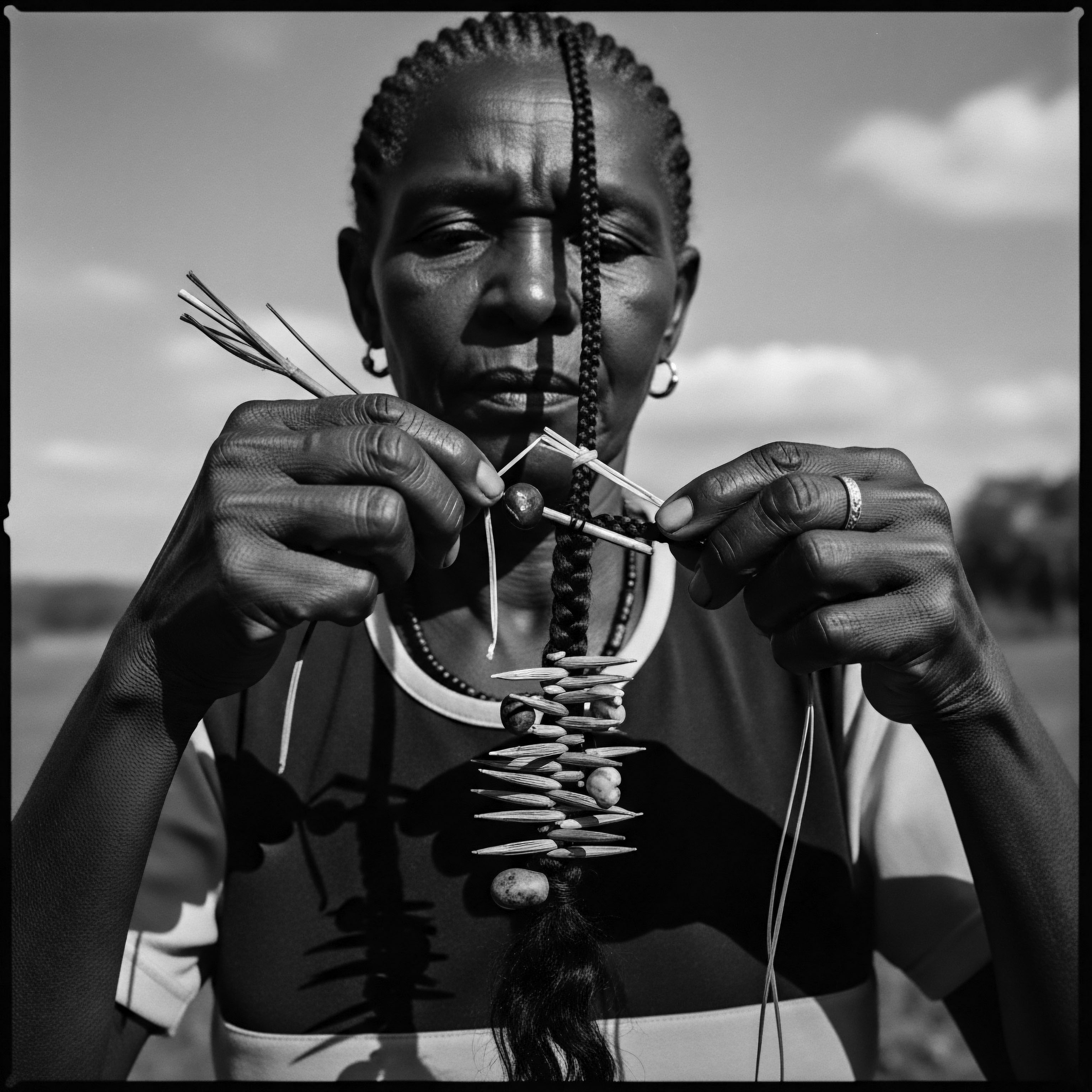
The Sociopolitical Dimensions of Hair Meaning
The academic analysis of Cultural Hair Narratives further scrutinizes the sociopolitical implications of hair in contexts of power and marginalization. Hair has historically been a battleground for control, where dominant cultures have imposed their aesthetic standards, leading to the stigmatization and criminalization of textured hair. This has necessitated a constant struggle for recognition and validation of diverse hair forms. The ‘politics of hair’ is a critical component of these narratives, examining how hair is regulated, judged, and politicized in public and private spheres.
The enduring legacy of the Black Codes and Jim Crow laws in the United States, which often dictated hair presentation and appearance, serves as a stark reminder of how hair was weaponized to enforce racial hierarchies. The very act of wearing one’s natural hair became a rebellious statement against systemic oppression. The subsequent Natural Hair Movement, emerging with renewed vigor in recent decades, is a contemporary continuation of this historical struggle, re-asserting the beauty and validity of textured hair as an act of self-love and cultural sovereignty. This movement is not merely about aesthetics; it is a profound socio-political statement, a re-claiming of narrative authority over one’s own corporeal representation.
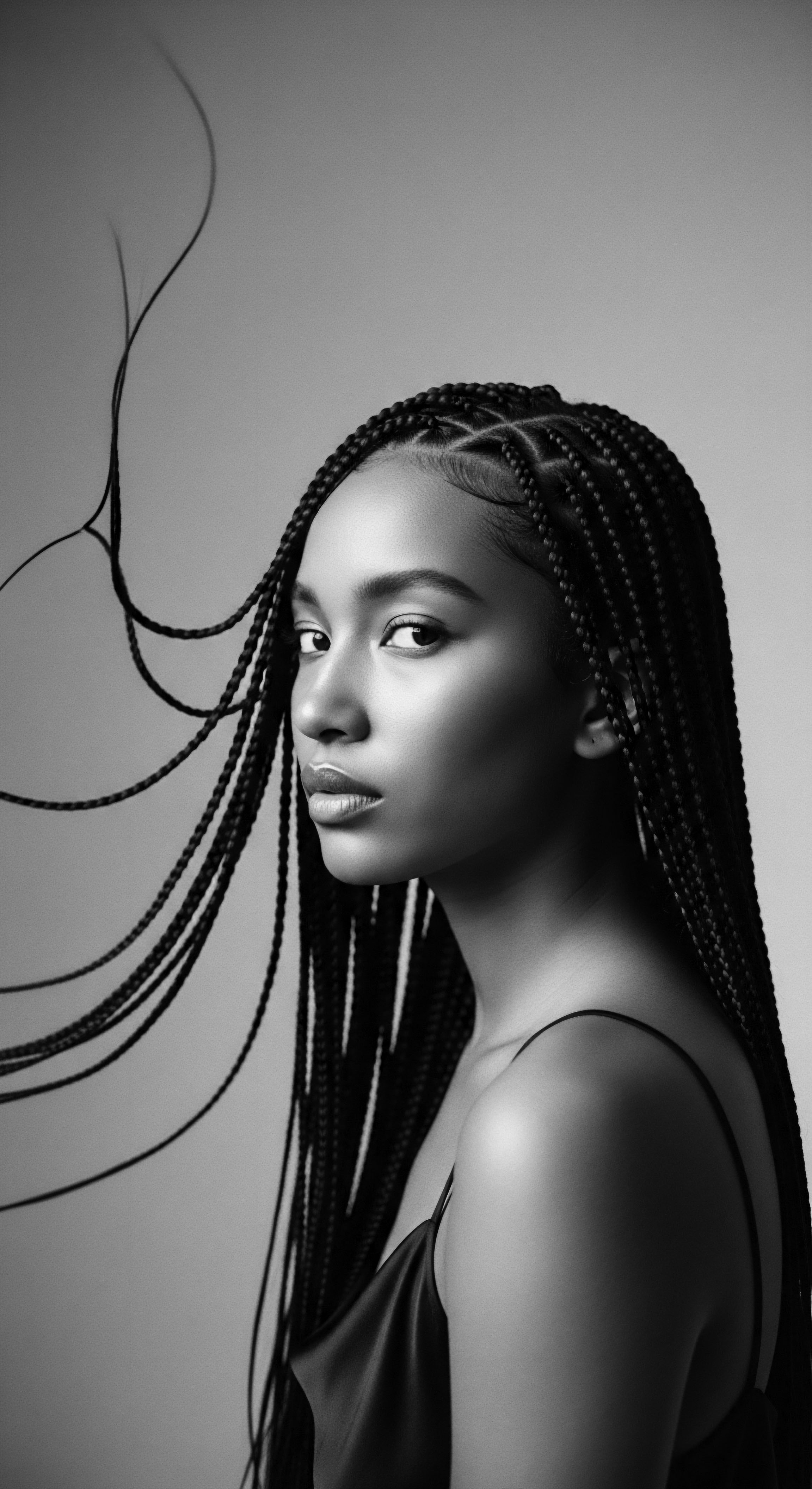
Reflection on the Heritage of Cultural Hair Narratives
The profound meditation on Cultural Hair Narratives, particularly through the lens of textured hair heritage, reveals an enduring legacy that transcends time and geography. From the ‘Echoes from the Source,’ where elemental biology and ancient wisdom first converged, to ‘The Tender Thread’ of communal care and intergenerational wisdom, and finally to ‘The Unbound Helix,’ where hair becomes a potent symbol of identity and resistance, the journey of these narratives is a testament to the spirit of a strand. It is a continuous unfolding, a vibrant conversation between past and present, between ancestral knowledge and contemporary expression.
Roothea’s living library, in its commitment to preserving and celebrating this heritage, understands that each coil and kink carries not only genetic code but also the indelible imprint of human experience. The stories held within textured hair are not static relics; they are dynamic, breathing accounts of survival, beauty, ingenuity, and profound connection. They speak of resilience forged in adversity, of joy found in communal ritual, and of the unwavering determination to define oneself on one’s own terms.
To truly appreciate Cultural Hair Narratives is to recognize the sacredness of this connection—to the earth that provided the earliest remedies, to the hands that first braided patterns of protection and belonging, and to the voices that whispered stories of strength and defiance through generations. It is an invitation to listen deeply to the silent eloquence of hair, to honor its journey, and to participate consciously in the ongoing creation of its future narratives. This journey, rooted in the Soul of a Strand, is a continuous act of remembrance, a celebration of heritage that remains vibrant and ever-present.

References
- Byrd, A. & Tharps, L. (2001). Hair Story ❉ Untangling the Roots of Black Hair in America. St. Martin’s Press.
- Mercer, K. (1994). Welcome to the Jungle ❉ New Positions in Cultural and Art History. Routledge.
- Hooks, b. (1992). Black Looks ❉ Race and Representation. South End Press.
- Patton, S. (2006). African-American Hair as Culture and History. Temple University Press.
- Tetteh, P. K. (2001). The Hair in African Art and Culture. Museum for African Art.
- Cobb, N. M. (2014). Soul Train ❉ The Music, Dance, and Style of a Generation. HarperCollins.
- Okoro, N. (2013). African Traditional Hairdressing ❉ A Cultural and Artistic Expression. University Press of America.
- Gilroy, P. (1993). The Black Atlantic ❉ Modernity and Double Consciousness. Harvard University Press.
- Gates, H. L. (1988). The Signifying Monkey ❉ A Theory of Afro-American Literary Criticism. Oxford University Press.
